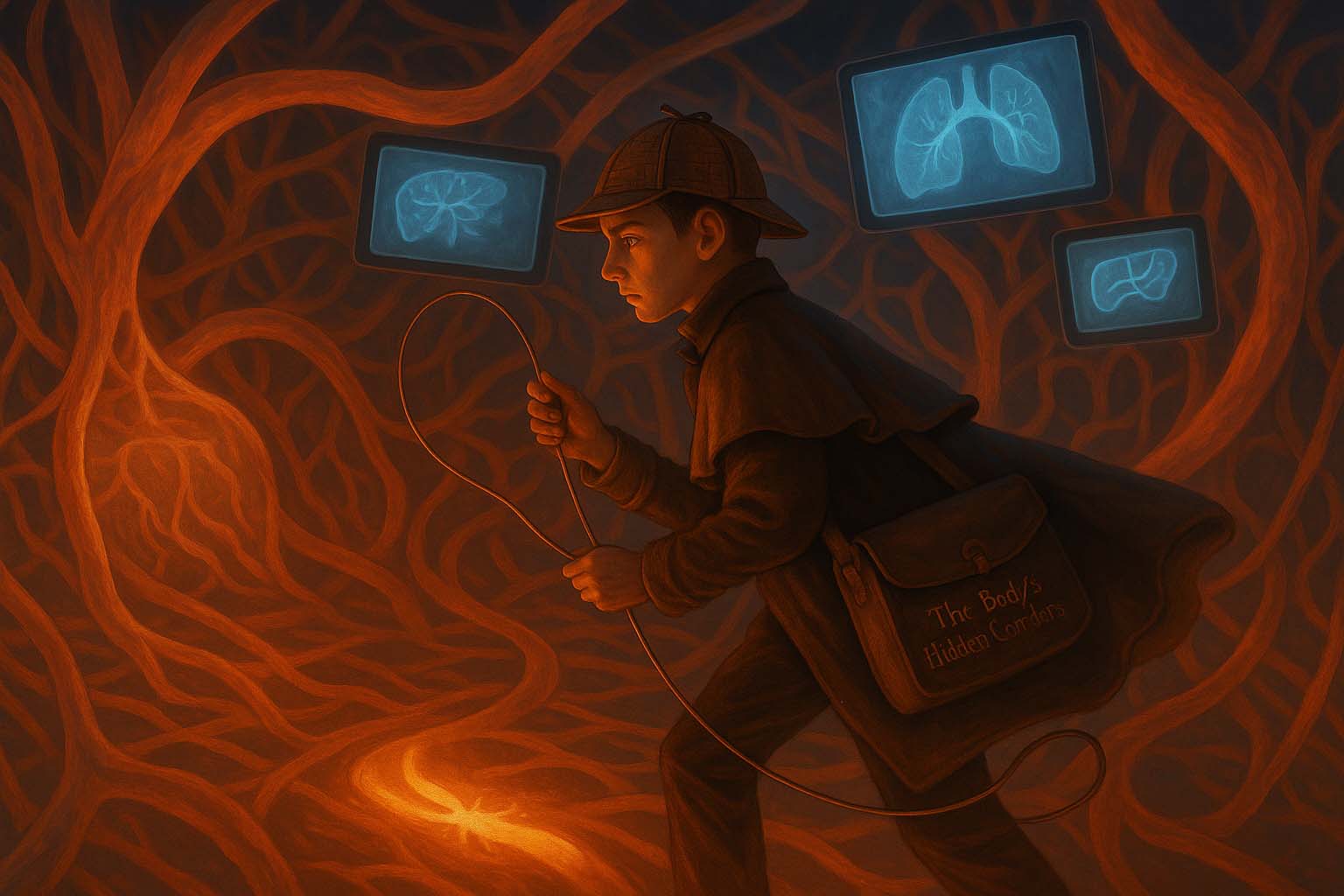
Interventional Radiology
- Posted by admin
- Categories Diagnostics & Interventional Medicine
- Date May 24, 2025
- Comments 0 comment
The Image-Guided Detective’s Domain – Cracking the Cases of Blockages, Bleeds, and Barely-There Breakthroughs
1. Introduction: The Scene of the Specialty
Step into the shoes of an Interventional Radiology sleuth.
This is the theatre of minimally invasive miracles—where diagnosis meets treatment through a pinhole in the skin. Interventional radiologists are navigators of the body’s vessels, ducts, and tissues, using imaging to guide wires, catheters, and needles into places others fear to reach. Welcome to a world where scalpels are traded for stents, and where precision is performed in real time, under live imaging, in near silence.
2. Key Mysteries They Solve (Common Conditions & Procedures)
These detectives specialise in solving cases involving:
- Vascular Blockages and Bleeds – angioplasty, embolisation, and clot retrieval.
- Tumour-Targeted Therapies – radiofrequency ablation, chemoembolisation, and Y-90 treatment.
- Biliary and Urinary Obstructions – percutaneous drains and stents for relief and decompression.
- Biopsies and Drainages – image-guided access to fluid, mass, or infection with surgical-level precision.
Each case is a real-time rescue—solving the mystery and treating the cause in one seamless act.
3. Their Trusted Tools & Techniques
Every detective has their kit—and in Interventional Radiology, tools may include:
- Ultrasound, Fluoroscopy, CT, and MRI Guidance – the imaging compass for every move.
- Guidewires, Catheters, and Sheaths – the navigational tools of minimally invasive travel.
- Embolic Agents, Stents, and Coils – used to open, close, reroute, or stabilise critical anatomy.
- Cone Beam CT & Fusion Imaging – integrating scans for even higher precision.
This is surgical intent with radiological access—treatment through the pathways only pictures can provide.
4. The Charms of This Field: Why It Captivates the Curious
- Diagnosis + Therapy: You find the problem and fix it—sometimes within minutes.
- Minimally Invasive Power: Patients recover faster, bleed less, and often avoid major surgery.
- Cross-System Reach: Work with oncology, vascular, hepatobiliary, trauma, nephrology, and beyond.
- Technological Frontier: Constant innovation in devices, robotics, and image-guided planning.
This is the cutting edge—without the cuts.
5. Challenges: The Toughest Cases They Face
- High-Stakes, Low-Visibility Work – Bleeding, anatomy variants, and urgent decisions unfold in tight corridors.
- Underappreciation – Many clinicians (and patients) don’t realise how transformative IR can be.
- Emergencies on Standby – IR often runs 24/7, from trauma embolisation to septic drain placement.
- Training Intensity – Requires mastery of imaging, anatomy, endovascular skill, and procedural decision-making.
But the seasoned IR knows: the greatest impact often comes with the smallest footprint.
6. Famous Cases and Hallmark Clues
- The “Classic Presentation” – Postpartum haemorrhage not responding to medications: uterine artery embolisation.
- The “Zebra” – Inoperable hepatocellular carcinoma: selective Y-90 radioembolisation.
- The “Aha Moment” – Sudden chest pain and shortness of breath: CT reveals PE; IR retrieves the clot through catheter thrombectomy.
7. Your Training Trail: How to Join the Investigation
To become an Interventional Radiology detective:
- Begin with training in diagnostic radiology, then sub-specialise in IR through an integrated or fellowship pathway.
- Develop skill in live imaging interpretation, endovascular technique, and real-time procedural adaptation.
- Learn to collaborate across departments—your work often bridges gaps between diagnosis and surgery.
- Embrace innovation and improvisation—you’ll often be the one who finds a way when others can’t.
Whether placing a drain in sepsis, saving a limb from ischaemia, or shutting down a pelvic bleed in minutes, you’ll be the silent saviour behind the scenes.
8. Final Words: The Signature of the Interventional Radiology Detective
Interventional radiology detectives are the hands behind the image—the ones who turn scans into solutions.
They work with wires, wits, and wonder, guiding tools through the hidden corridors of the body to restore life from the inside out.
They act quietly, decisively, and with grace—often when time is tight and options are few.
So if you’re drawn to blend surgery, imaging, and innovation into something seamless—then this is your precision-guided calling.



